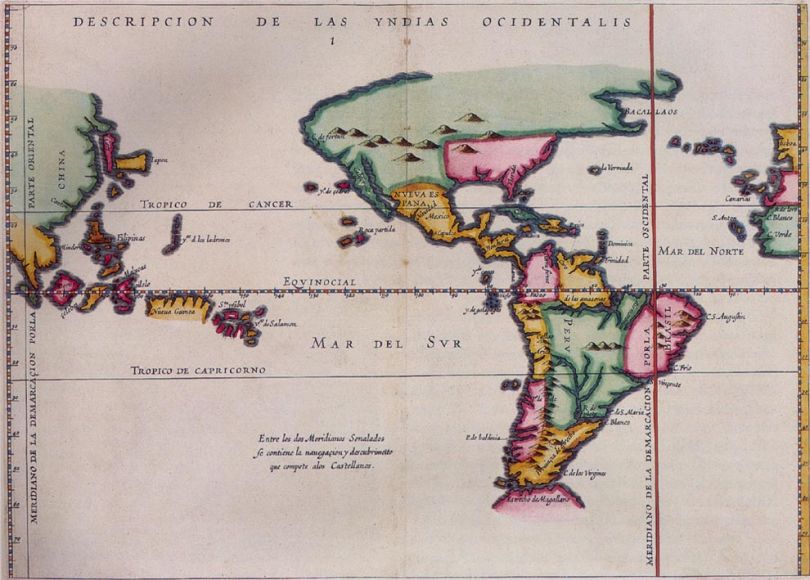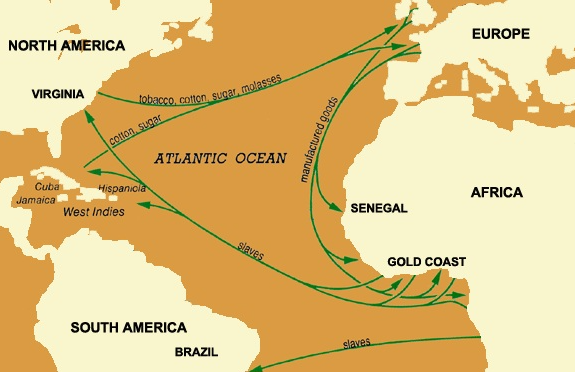Dalia Savy
Amanda DoAmaral
AP World History: Modern 🌍
577 resourcesSee Units
4.4 Required Content
Thematic Foci:
- Governance - A variety of internal and external factors contribute to state formation, expansion, and decline. Governments maintain order through a variety of administrative institutions, policies, and procedures, and governments obtain, retain, and exercise power in different ways and for different purposes.
- Economic Systems - As societies develop, they affect and are affected by the ways that they produce, exchange, and consume goods and services.
- Social Interactions and Organization - The process by which societies group their members and the norms that govern the interactions between these groups and between individuals influence political, economic, and cultural institutions and organization.
College Board Learning Objectives:
- Explain the process of state building and expansion among various empires and states in the period from 1450 to 1750.
- Explain the continuities and changes in economic systems and labor systems from 1450 to 1750.
- Explain changes and continuities in systems of slavery in the period from 1450 to 1750.
Historical Developments:
- KC-4.3.II.A.i - Europeans established new trading posts in Africa and Asia, which proved profitable for the rulers and merchants involved in new global trade networks. Some Asian states sought to limit the disruptive economic and cultural effects of European-dominated long-distance trade by adopting restrictive or isolationist trade policies.
- KC-4.3.II.C - Driven largely by political, religious, and economic rivalries, European states established new maritime empires, including the Portuguese, Spanish, Dutch, French, and British.
- KC-4.3.II.A.ii - The expansion of maritime trading networks fostered the growth of states in Africa, including the Asante and the Kingdom of the Kongo, whose participation in trading networks led to an increase in their influence.
- KC-4.3.II.A.iii - Despite some disruption and restructuring due to the arrival of Portuguese, Spanish, and Dutch merchants, existing trade networks in the Indian Ocean continued to flourish and included intra-Asian trade and Asian merchants.
- KC-4.2.II.D - Newly developed colonial economies in the Americas largely depended on agriculture, utilized existing labor systems, including the Incan mit’a, and introduced new labor systems including chattel slavery, indentured servitude, and encomienda and hacienda systems.
- KC-4.2.II.B - Enslavement in Africa continued in its traditional forms, including the incorporation of enslaved persons into households and the export of enslaved persons to the Mediterranean and the Indian Ocean regions.
- KC-4.2.II.C - The growth of the plantation economy increased the demand for enslaved labor in the Americas, leading to significant demographic, social, and cultural changes.
Europeans in the World
As Europeans explored and colonized Africa and Asia, they set up trading post cities to establish a base. These cities became centers of imperial administrations later on.
Africa
In West Africa, European merchants and missionaries reached inland to Kongo and Benin. They established relationships with local leaders who facilitated the trade of enslaved people. Some West African states, such as the Asante Empire and the Kingdom of the Kongo, became major players in the slave trade and gained significant wealth and power as a result. However, the slave trade also had negative consequences for West Africa, as it resulted in the loss of millions of people from the region and contributed to social and economic disruption.
Japan
Japan initially welcomed Portuguese and Dutch traders and missionaries, then pulled back by banning Christianity and contact with the outside. As they welcomed Europeans, the country experienced a period of cultural exchange and innovation. This was during their Edo period, but in 1639, the government banned Christianity and restricted contact with the outside world. They remained isolated for most of the 17th and 18th centuries in an effort to protect traditional culture.
This period of isolation allowed Japan to develop a unique and distinctive culture, but it also had negative consequences, as the country lost out on many of the advances and technological developments that were taking place in other parts of the world.
China
China was also set on isolating itself from foreign affairs. After Zheng He’s explorations, the Ming dynasty retreated into isolationist policies. Europeans would have to wait a few centuries for access to China.
It wasn't until the 19th century, during the Qing dynasty, that China began to open up to the outside world again. The Qing government was forced to sign a series of treaties with foreign powers that granted them access to Chinese ports and concessions in China, as foreign powers were afraid China would retreat to their isolationist policies again.
India
The Mughal Empire in India was open to trading with Europeans and the British East India Company (EIC) was established to take advantage of these trade opportunities. The EIC initially operated as a trading company, but it gradually expanded its influence in India over the course of the 17th, 18th, and 19th centuries.
It took advantage of tensions between Muslims and Hindus in India to further its own interests, and it often allied with one group against the other. The company also entered into military conflicts with local rulers and regional powers in India, and it gradually expanded its control over large parts of the country. By the 19th century, the British had direct colonial control over all of India, and the country became a major part of the British Empire. The British rule of India had a significant impact on the country's political, economic, and social development, and it continues to be a controversial and contentious issue in modern India.
The Americas
The Spanish and Portuguese divided up the lands of the Americas before they even explored or conquered any of them. In 1494, the Catholic Monarchs of Spain and Portugal signed the Treaty of Tordesillas, which gave Brazil to the Portuguese and everywhere else to the Spanish. If you think about it, languages are still divided across these lines.

Image Courtesy of the National Geographic Society
The Spanish conquistadors brought down the thriving Aztec and Inca empires within a few decades. The Aztecs fell first when Hernán Cortés and his troops brought disease to the region. Cortés also combined the forces of Aztec rivals to topple them faster. He then established the Spanish capital of Mexico City.
The Incas fell quickly because of disease and betrayal. Francisco Pizarro and his troops captured the Inca leader Atahualpa and convinced the Incas to trade gold for his return. They complied, but Pizarro still had Atahualpa killed, effectively toppling the empire.
The Spanish also established a fort at St. Augustine in present-day Florida. In North America, the Spanish had control of the southwest regions, Central America, and Florida.
North of the Spanish territory, the French and British were fueling their rivalry as they competed for land and control of resources. The French aligned with the Iroquois for protection and trading rights. The rivalry eventually popped off as the Seven Years’ War exploded tensions around the world. The British drove the French out of Canada and India after that.
Changes in Labor Systems
Economic systems were disrupted as trade intensified. The Portuguese controlled some areas of the Indian Ocean network as they were strong-armed locals, but merchants continued to trade and migrate.
The encomienda and hacienda systems were two economic systems that were used in the Spanish Empire in the Americas to extract wealth and labor from the indigenous peoples and African slaves who lived in these territories.
- Under the encomienda system, Spanish colonists were granted the right to demand labor and tribute from a specific group of indigenous people in exchange for the colonists' protection and Christian instruction. They basically forced Natives to harvest cash crops in exchange for food and shelter, similar to the feudal system. The Natives were tied to the land and not free to leave.
- The hacienda system was a system of large agricultural estates that were developed in the Spanish Empire in the Americas. Haciendas were typically owned by wealthy landowners, and they were worked by indentured laborers, including indigenous people and African slaves. The hacienda system was used to produce agricultural goods, such as sugar, tobacco, and livestock, for export to Europe.
Meanwhile, the silver trade was insanely profitable for the Spanish and the mines at Potosi and Zacatecas needed as much labor as possible. Indigenous peoples were forced to work in the harsh mines using a modified Mit’a system to nearly enslave the Natives.
Comparing Labor Systems
| Type | Place | Work | Characteristics |
| Slave | Americas & Africa | Harvested cash crops, worked plantations, maintained homes | Treated as property, with little to no rights |
| Serfs | Europe & Asia | Worked the farms of Lords | Tied to the land, No legal protections |
| Indentured Servants | Global | Fieldwork, maintained homes | Transport paid in exchange for 7 years of unpaid labor |
| Free | Europe & Asia | Blacksmith, Weaving | Worked own land |
| Peasant | Asia | Farming | Paid taxes to Lord, Paid tithes to Church |
| Nomad | Europe, Asia, & Africa | Herding, pastoralism, breeding | Moved often, Used land temporarily |
| Guild Member | Europe | Skilled crafts | Apprentice, Eventually independent |
Atlantic Slave Trade
The work of harvesting cash crops and mining silver was labor intensive. These new markets were profitable, but could only be sustained with a lot of cheap or free labor.
Africa was targeted for labor in the Americas because Indigenous populations were decimated by disease and were able to escape with knowledge of the land and the ability to blend in with other Natives. Indentured servants provided cheap labor for a while, but plantation owners couldn’t scale their businesses when laborers would leave after seven years.
As the slave trade expanded, some African Kings participated and shared profits. Slaves were captured, transported to holding pens (“Points of No Return”), and then crammed on ships for the Middle Passage journey across the Atlantic.

Map of the Middle Passage. Image Courtesy of crispusattucksmuseum
The demographic effects of the slave trade in Africa were unprecedented. Although the population of Africa ultimately increased because of increased food resources, in some regions the population declined as slaves were kidnapped. Families were separated and there was a gender imbalance because more men were taken than women.
Browse Study Guides By Unit
🐎Unit 1 – The Global Tapestry, 1200-1450
🐫Unit 2 – Networks of Exchange, 1200-1450
🕌Unit 3 – Land-Based Empires, 1450-1750
🍕Unit 4 – Transoceanic Interactions, 1450-1750
✊🏽Unit 5 – Revolutions, 1750-1900
🚂Unit 6 – Consequences of Industrialization, 1750-1900
💣Unit 7 – Global Conflict, 1900-Present
🥶Unit 8 – Cold War & Decolonization, 1900-Present
✈️Unit 9 – Globalization, 1900-Present
✏️Frequently Asked Questions
🤔Exam Skills
👉🏼Subject Guides
📝AMSCO Notes

Fiveable
Resources
© 2025 Fiveable Inc. All rights reserved.